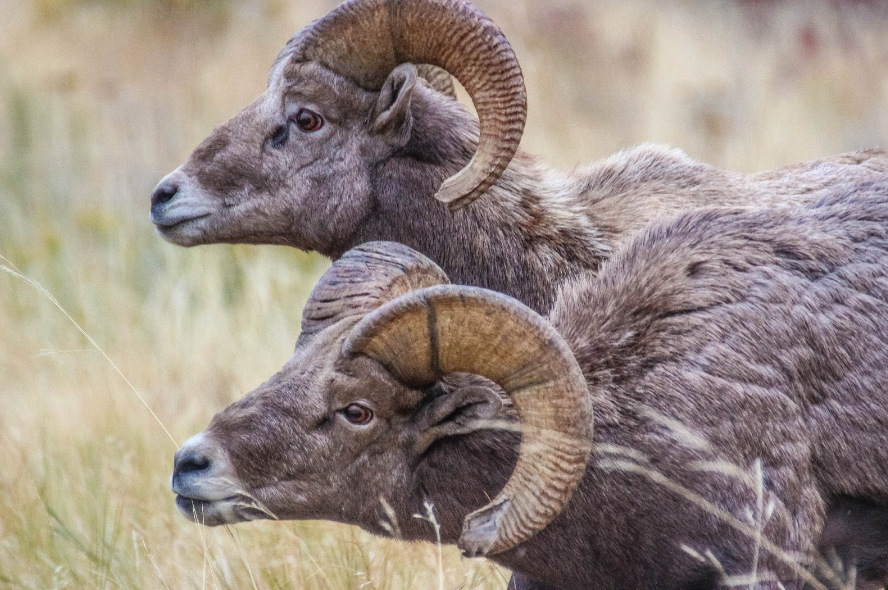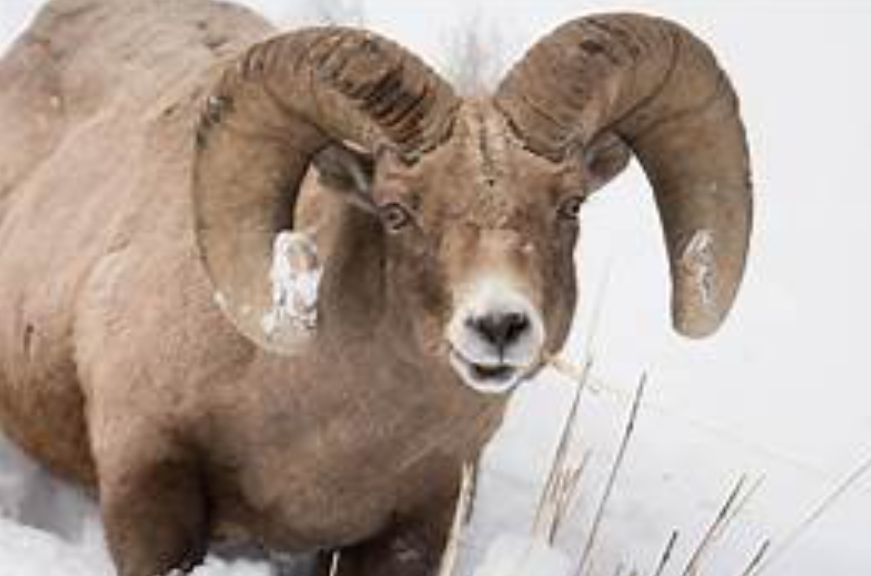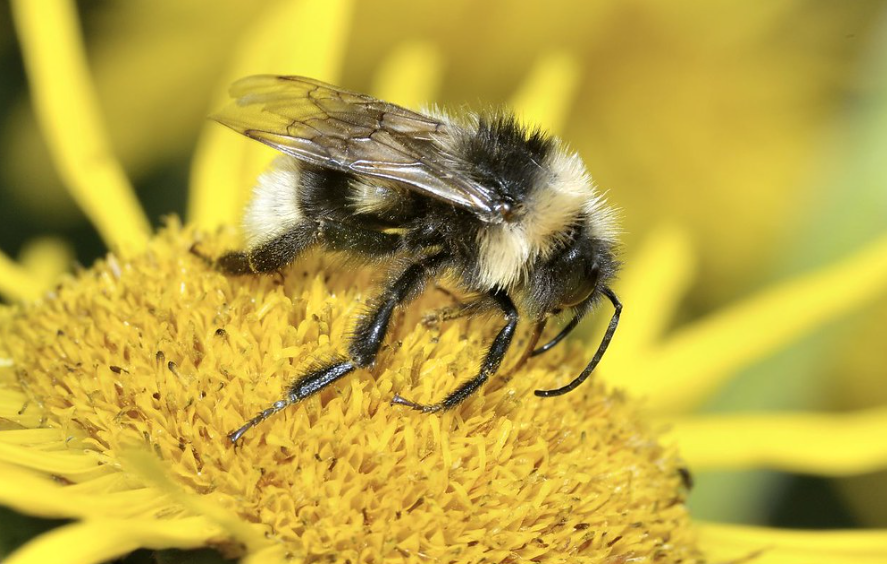
Significance and uniqueness of Bighorn Sheep
This incredible animal, which is native to the Rocky Mountains of North America, is known by its scientific name, Ovis canadensis, or bighorn sheep. These amazing creatures are well adapted to their hostile surroundings and have numerous unique characteristics that set them apart from other animals. Bighorn sheep are a remarkable species that have adapted to the severe climate of the Rocky Mountains. Their social structure, unique behaviours, and impressive horns make them fascinating candidates for study.
Physical appearance and characteristics of Bighorn Sheep
One of the things that sets bighorn sheep apart is their amazing pair of horns. There are horns on both sexes, but the males, called rams, have bigger, more elaborate horns. The maximum weight and length of these horns are thirty pounds and three feet, respectively. They are composed of the same material—a bone core encased in a keratin sheath—as human hair and nails. During the mating season, the horns serve as demonstrations of dominance in addition to offering protection from predators.
Behavior Bighorn Sheep within the herd, hierarchy and communication
Bighorn sheep exist in social groupings called herds, which are composed of individual members. The bulk of these herds are made up of lambs, young rams, and ewes (females), with mature rams often forming smaller bachelor groups. Protecting the group and directing the herds to suitable grazing grounds are the responsibilities of a dominant ram.
Mating rituals of Bighorn Sheep and competition among males
During the mating season, male bighorn sheep engage in violent combat known as the rut in an effort to establish their dominance and get access to females. The fighters in these bouts rush at top speed at one another, crashing into each other with a loud snap. They can both hear the collision from a distance. The victorious ram is granted the right to procreate with the females in the herd in order to protect his genes.

Threats faced by Bighorn Sheep from over hunting and habitat loss
The major causes of the many problems bighorn sheep populations have encountered throughout the years have been overhunting, illness, and habitat degradation. As a result, many conservation programmes have been implemented to protect and repopulate these populations. These programmes include the establishment of protected areas, disease monitoring, and habitat restoration.
Effects of Habitat Fragmentation and conservation efforts for Bighorn Sheep
Despite these conservation efforts, bighorn sheep are still endangered by human activities such as habitat fragmentation and climate change. If their habitat is broken up, it might affect their migratory habits and limit their access to food and water supplies. On the other side, climate change may have an impact on the availability of food supplies and suitable habitats.
Fascinating facts about Bighorn Sheep
Ovis canadensis, or bighorn sheep, are magnificent animals that live in the untamed highlands and valleys of North America. For generations, those who love nature and wildlife have been enthralled with these amazing creatures. In this post, we will study some amazing facts about bighorn sheep and obtain a greater knowledge of their distinct qualities and activities.
Outstanding Physical Features and characteristics of bighorn sheep
The remarkable physical characteristics of bighorn sheep, especially their enormous, curving horns, are widely recognised. The enormous horns of male bighorn sheep, referred to as rams, may weigh up to 30 pounds (13.6 kilogrammes) and reach a length of up to 3 feet (0.9 metres). During the breeding season, these horns are employed as a sign of power in ram fights.
Ability to navigate steep and rocky terrains by bighorn Sheep
The extraordinary agility and surefootedness of bighorn sheep are another noteworthy characteristic. Their flexible foot structure and cushioned hooves allow them to easily traverse hilly and rough terrain. They are well adapted to their mountainous environments because of their characteristics, which enable them to leap over large gaps and scale steep slopes.
Temperament and behavior of bighorn sheep with other animals
Herds are social units in which bighorn sheep dwell. A normal sheep herd consists of a dominant ram, lambs, and ewes, or female sheep. Rams demonstrate their superiority in fierce confrontations by charging at opponents at great speeds and clashing with a loud boom of horns. These conflicts decide who is allowed to mate with ewes and establish the hierarchy among the herd.
Reproductive behavior of Bighorn Sheep, mating season and courtship rituals
The rut, or mating season, occurs in late autumn or early winter. The rams compete ferociously during this period to get the ewes’ attention. They display their power and supremacy by bumping against one another and making loud noises called “bugling.” In order to preserve their genetic lineage, the winning ram subsequently mates with other ewes in the herd.
How bighorn sheep have adapted to their specific habitats
Bighorn sheep have developed a number of amazing adaptations that help them live in their hostile alpine habitats. Their superior vision is one of these adaptations. Because of their vast range of vision and the placement of their eyes on the sides of their heads, they are able to identify distant predators like coyotes and mountain lions.
Bighorn Sheep when navigating precarious ledges, including their cautious movements
Bighorn sheep also have excellent balance, which enables them to go over precarious ledges and high cliffs without losing their equilibrium. Their powerful legs and robust physique allow them to easily ascend and descend dangerous hills. Additionally, they have a thick coat that is double-layered to shield them from the summer heat and to act as insulation in the chilly winter months.
Feeding habits and preferred vegetation diet for Bighorn Sheep
Being herbivores, bighorn sheep mostly eat the grasses, bushes, and other plants that grow in their mountainous environments. They have evolved to be able to take nutrients from hardy, fibrous plants. Because of their unique digestive mechanism, they can effectively break down cellulose and thrive in settings with limited food supplies.

Survival of bighorn Sheep without water and ability to rehydrate
These amazing animals can survive for long periods of time without water. The majority of the moisture they need comes from the plants they eat. To rehydrate themselves, they will, however, drink from streams and other water sources when it are available.
Unique physiological and behavioral adaptations of Bighorn Sheep
Bighorn sheep are really amazing creatures that have evolved to survive in some of North America’s most difficult environments. They are a fascinating species to study and adore because of their remarkable physical characteristics, social organisation, and survival adaptations. We may have a greater appreciation for the marvels of nature and the astounding variety of life on Earth by knowing these amazing facts about bighorn sheep.


